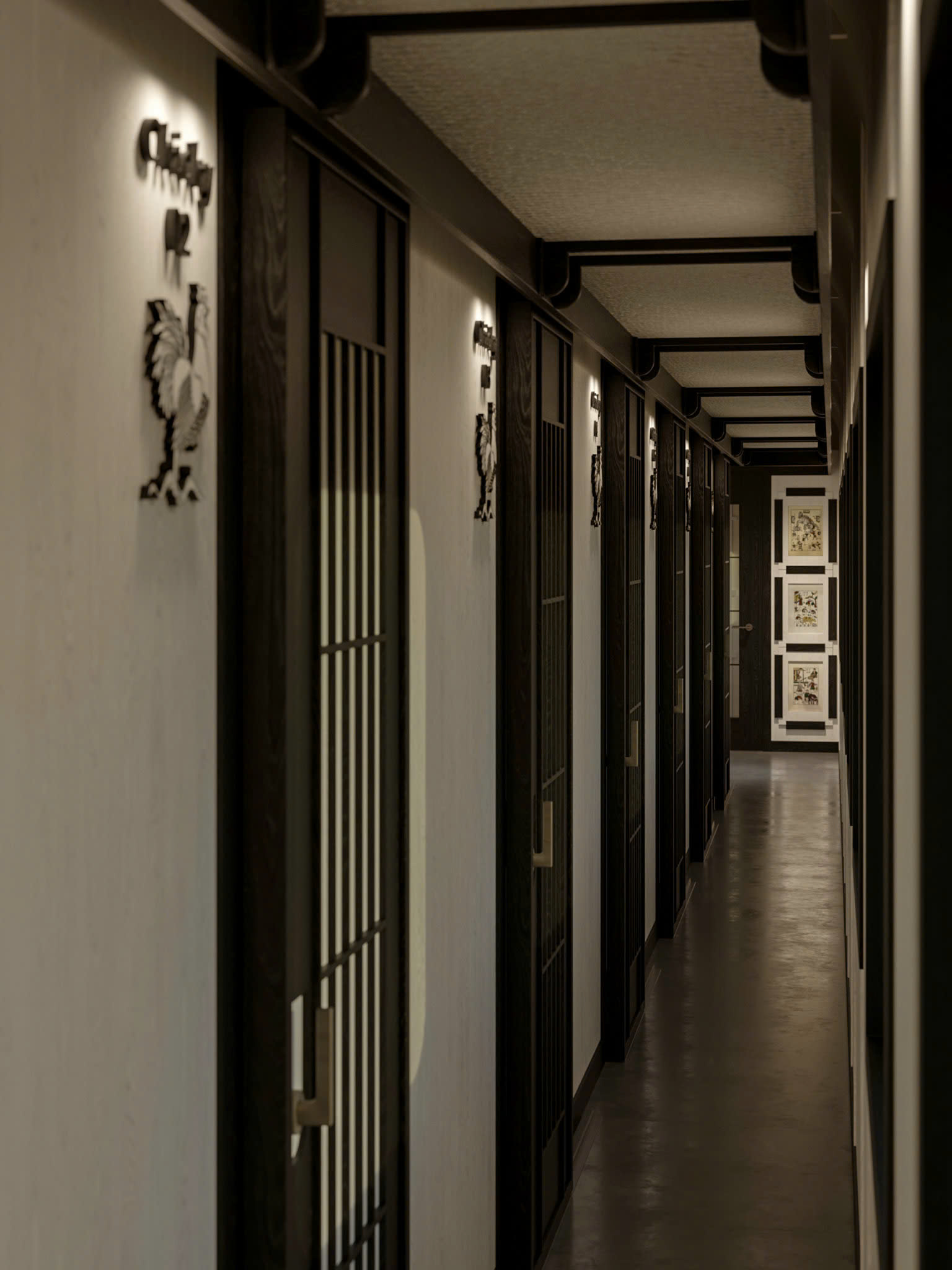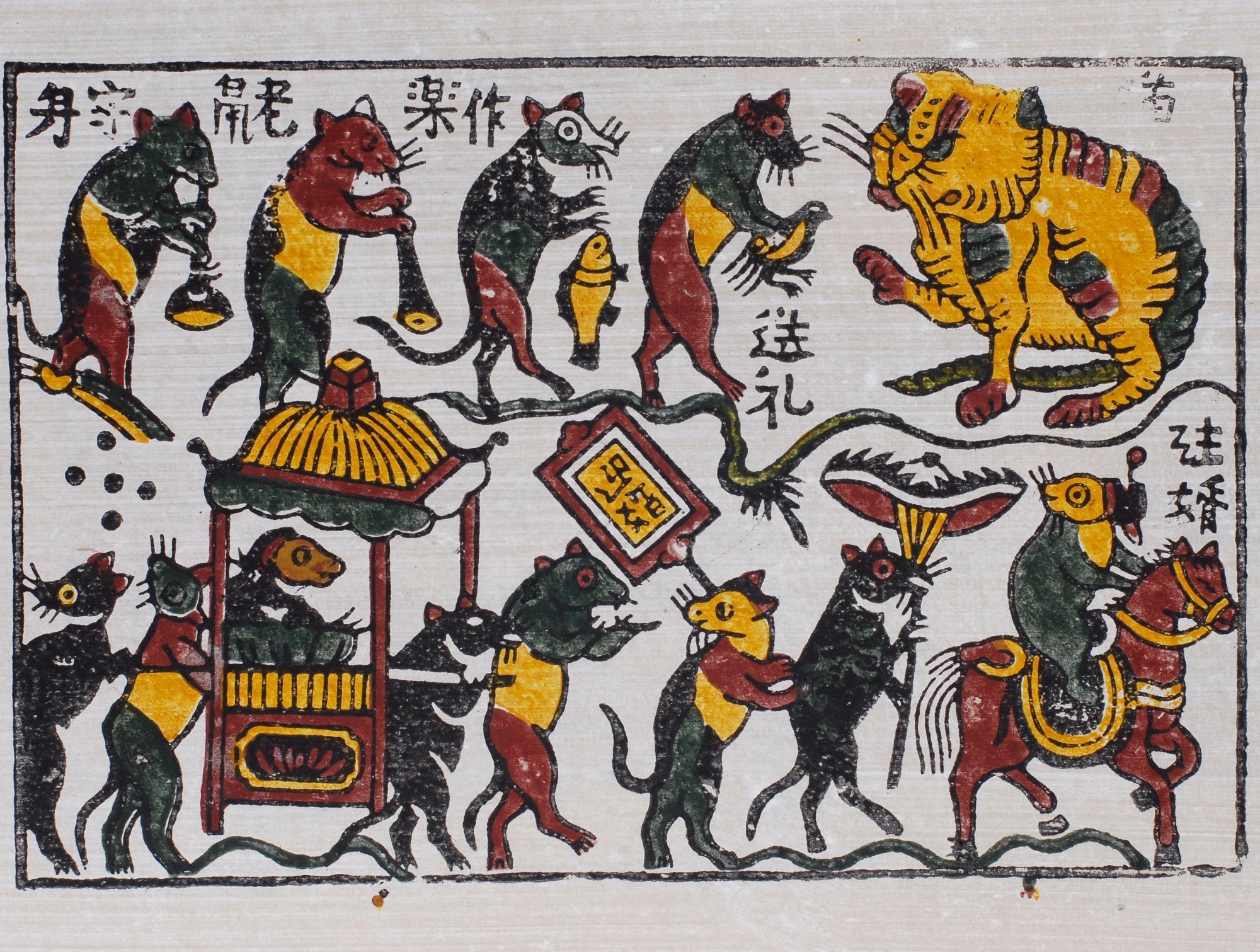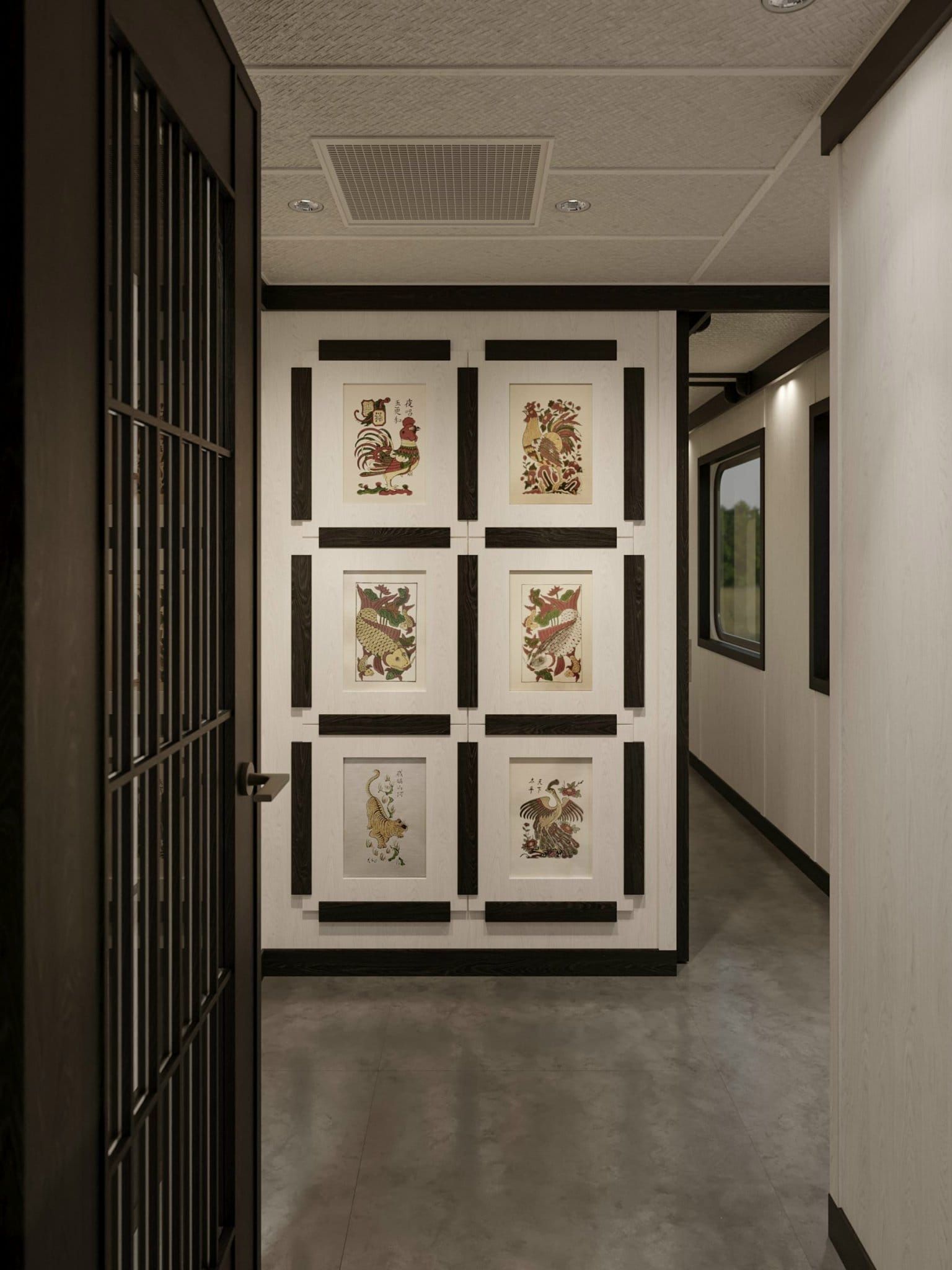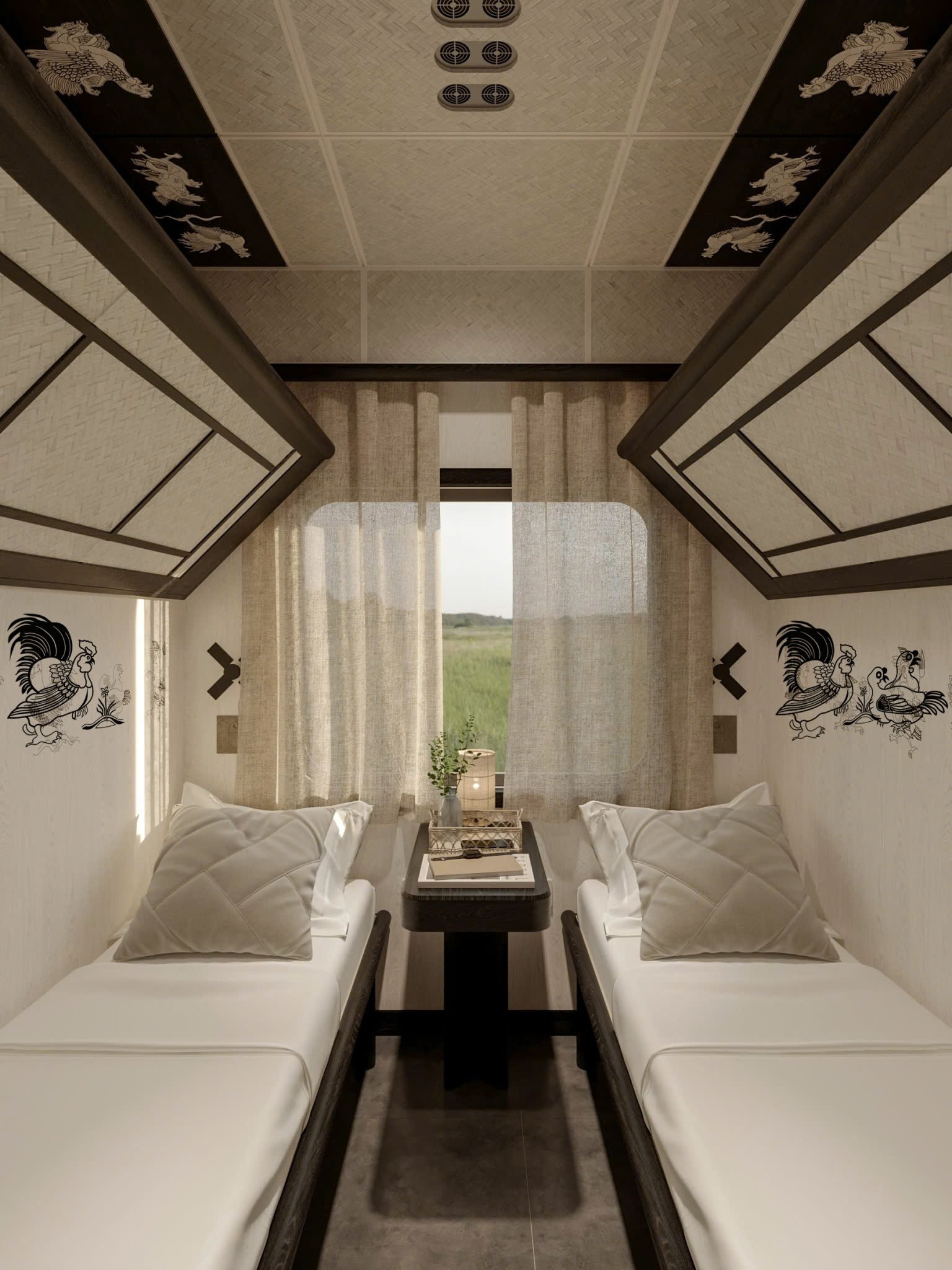P1 - Dong Ho Paintings Train
Among the Vietnamese folk woodcut paintings, Dong Ho paintings originating from Dong Ho village, Song Ho commune, Thuan Thanh district, Bac Ninh province are mentioned the most. It is a rich countryside of traditional culture.
A brief history of Dong Ho paintings
Dong Ho paintings reflect the life and religious customs of the people. Not only do they have unique features in lines and composition, the folk features of Dong Ho paintings also lie in the colors and printing paper materials. Dong Ho paintings are hand-printed from wooden blocks, combined with the strokes, colors and stories in each painting to create the unique features of Dong Ho paintings. This is a type of painting produced by traditional manual methods, using materials available in nature, close to the lives of Vietnamese people.
The most prosperous period of Dong Ho paintings was in the 17th and 18th centuries. At this time, people also call it Tet painting, because it is produced and sold on the occasion of Lunar New Year to everywhere in the countryside market. On those days, on each simple bamboo wall of the thatched cottage, the colors of the painting are as vibrant as the sound of fireworks, bringing joy and dreams at the beginning of the year.
In 2013, the craft of making Dong Ho folk paintings was recognized as a National Intangible Cultural Heritage of Vietnam.

The Premium Cabin with Dong Ho Paintings in Chapa Express Train.
Art in painting
Each print represents a legend or a philosophical allegory, a message of deep morals, theories, and beliefs. In order to have engravings that reach the level of sophistication, there must be a model painter. Pattern painters and board engravings require them to have a love of art and an artist's soul, especially to have a high level of technique.
The process of printing paintings is probably not very difficult because anyone can spread color on the wooden blocks and then print. Dong Ho folk painting does not strictly apply the anatomy, the principles of light or the laws of proximity of modern painting. Artists who create folk paintings have a lot of convention in composition, in the way of describing colors. All of them use a single-line drawing style to express themselves, so when watching folk paintings, we often encounter the interesting in simple but reasonable features.
Themes of Dong Ho paintings
Dong Ho woodcuts have many themes
– Congratulations: Expressing the eternal dream of workers (full meals, warm clothes, a prosperous home, prosperous business, many children).
– History: Praising national heroes, reflecting glorious feats in the process of defending and building the country.
– Worship paintings: Painted according to etiquette, customs and medical disciplines, parallel sentences.
– Story paintings: Promoting humanism, praising justice, educating morality.
– Proverb paintings: Vividly illustrating good examples of the ancients, containing profound philosophies.
– Landscape paintings: Expressing love for the homeland, lush flowers and grass.
– Daily life paintings: Reflecting farm work, fun games, eliminating bad customs, satirizing the ways of life.

“The Rat’s Wedding” (Đám cưới chuột)
Dong Ho Painting Handicrafting Process
Durable, flexible woodblocks
Each Dong Ho painting has 2-5 different woodblocks depending on the color of each model (each block corresponds to 1 color). This is the most difficult step, requiring the craftsman to have high skills.
To create color blocks, the craftsman needs to choose soft, light wood that can absorb color well. In Ho village, artisans often prefer to use dổi wood (ford-manglietia fordiana ) and vàng tâm wood (Magnolia conifera ) to make color blocks. For outline blocks, it is necessary to use durable, strong and smooth wood such as Manglietia conifera , Thị wood or Apocynaceae.
The painting printing process uses the method of printing on woodblocks and applies the printing process according to the chain. Each person will be responsible for a specific color. The number of color blocks and printing times depends on the number of colors in the painting.
Drawing paper made from shell powder
The background of the painting is dó paper (made from the bark of a tree called “dó”) covered with a layer of silver-colored (powdered from a type of shell). This type of paper is produced by hand from Dong Cao village - Bac Ninh or Buoi village - Hanoi, cut into many sizes, the smallest is 11cm x 12cm, the largest is 22cm x 31cm.
To get a complete sheet of dó/diep paper, people have to select each type of dó shell taken from the forest, then go through many stages of drying, soaking, pounding, mixing the powder into the paper machine, squeezing out the water, drying, and cutting the finished product. Dó paper is thin, fibrous, and has the ability to absorb color well without smudging.
On the paper there is a characteristic shiny layer called the ho diep layer, this powder layer is made from finely ground scallop shells cooked with rice flour and brushed onto the paper with a pine needle broom. This is also the reason why Dong Ho paintings are also called Diep (scallop) paintings. Finally, brushing ho diep layer to make the paper shiny, beautiful and durable.

Completely natural paint colors
The colors in Dong Ho paintings have 5 main colors that are completely natural: black is made from burn bamboo leaves and then taking their charcoal; green is made from the bark and leaves of indigo trees, yellow is made from sophora flowers, bright red is made from the trunk and roots of vang trees, paint is made from mountain gravel, white is made from scallop shells power.
The details will be colored with different shades of light and dark, highlighting or pressing down to depict the details of the lines in the painting. This is also a characteristic of this type of painting, the paint colors in the painting are simple but cannot be confused with any other type of painting.
On the dipped lacquer, when happy, when peaceful, the original colors vibrate with the light. The light yellow symbolizes abundance, the bright yellow color is like a ripe rice field, the green color is like a bamboo fence, the red color is like Yem ( a type of traditional halter top of ancient Vietnamese women) , the purple color is like a belt, the black color is like a silk skirt in the middle of the quan ho season. The carvings are very deep, the printed colors are flat and beautiful.
Printing
To complete a Dong Ho painting takes a lot of time. There must be a number of professional craftsmen who make ink and paper from natural materials around the area as well as make molds and print the painting. The raw pigments are mixed together and mixed with a certain amount of glutinous rice flour before printing to create a layer of glue, making the painting paper harder after drying.
This type of painting only uses monochrome color blocks divided by rough, clear borders, besides the characters are arranged evenly on the surface of the painting. Usually to print a painting, it takes 2 - 5 blocks, each block corresponding to 1 color. The dark color is printed first, followed by the light color, and finally the black color is printed to complete the painting.
Drying the painting
After the painting is printed, it will be dried.

The Premium Cabin with Dong Ho Paintings in Chapa Express Train.
P2 - Meaning of Dong Ho paintings
Synthetic
Related Articles
Do you want to book another itinerary, start now!
New booking


